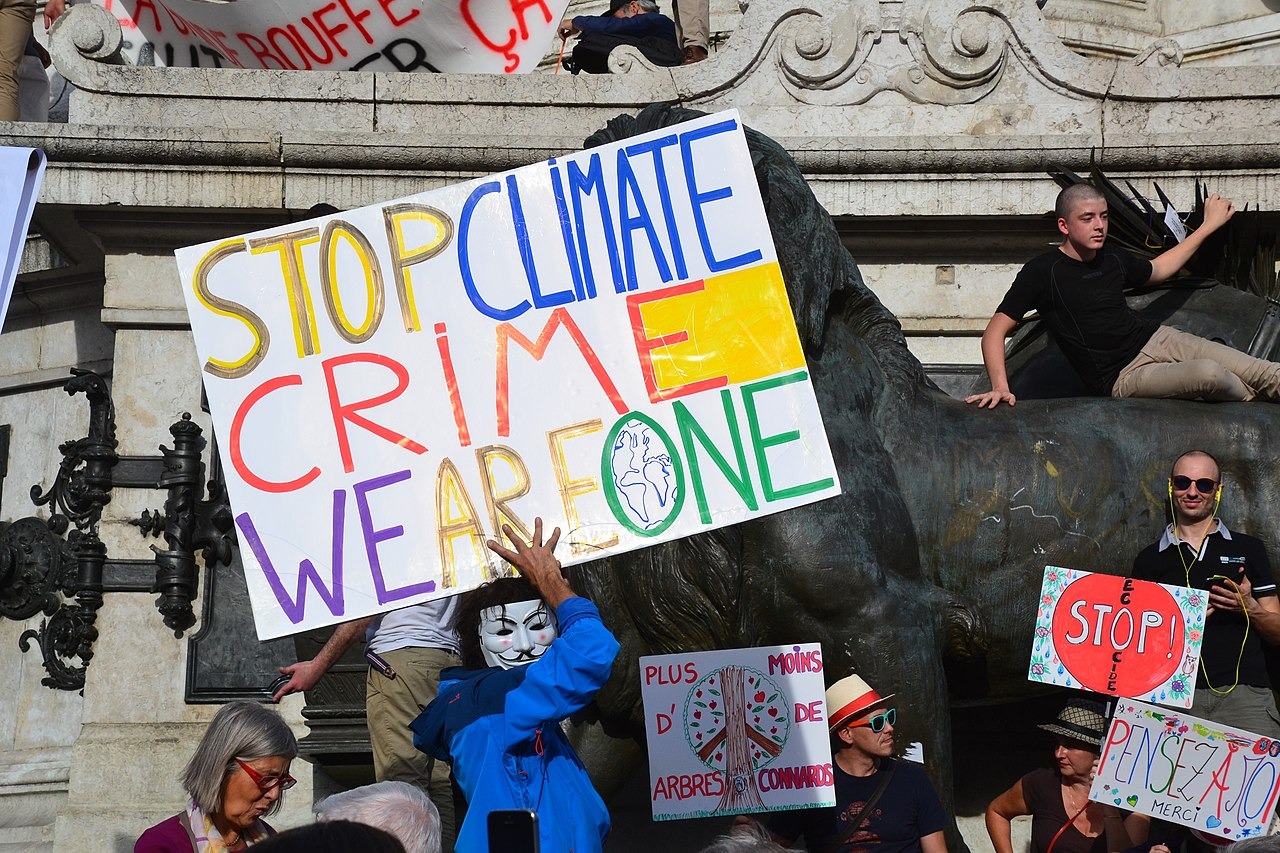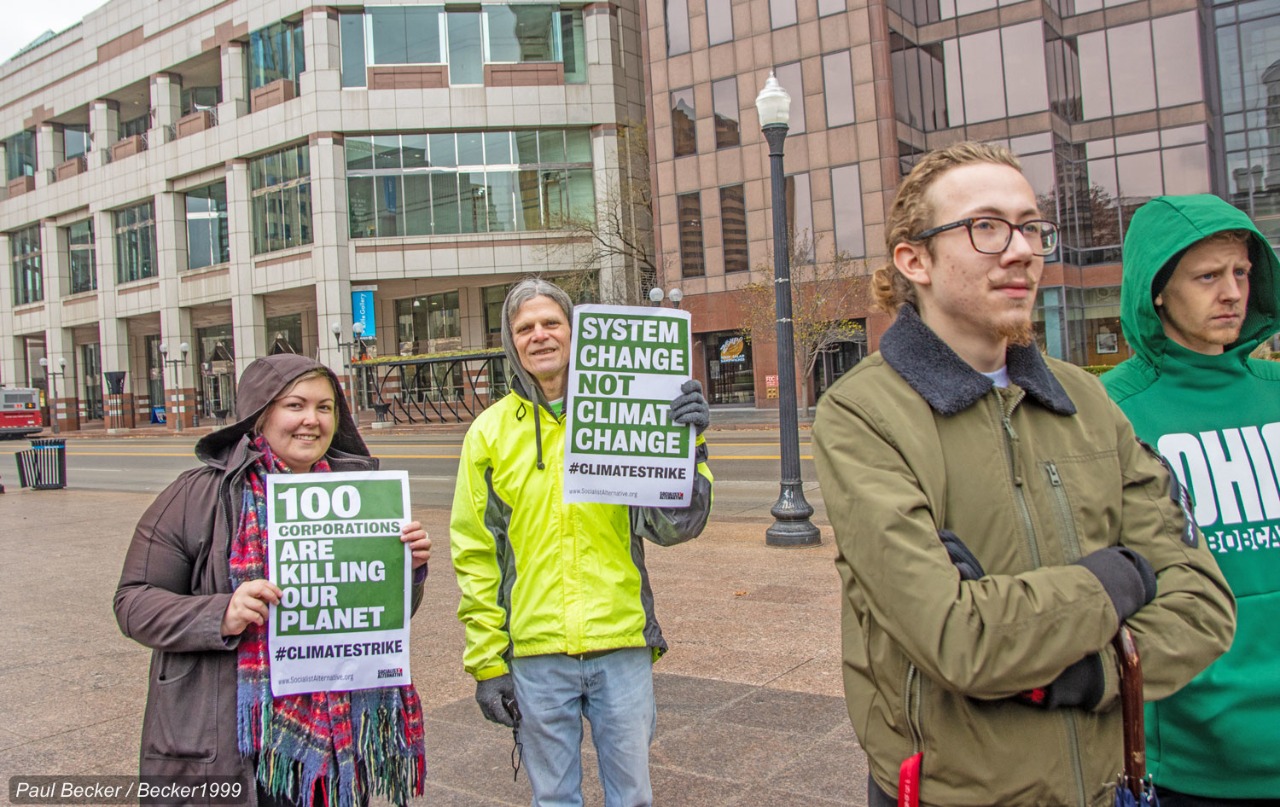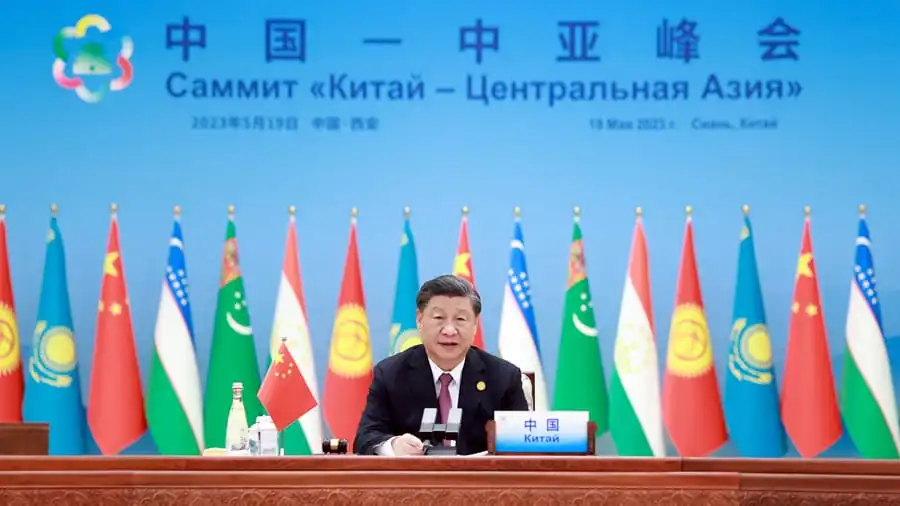The Economy and the Environment
There have been many declarations that defeating the climate emergency is impossible under capitalism. The imperatives of that system to accumulate profit through growing income and minimising costs are so powerful and globally dominant that they will subvert or pre-empt the actions that need to be taken to give humanity a chance of escaping from a crisis that now has to be seen as a global priority.
We of course agree with this analysis. This paper is an attempt to take it from the realms of general principle into concrete sectoral analysis of the forces driving the climate crisis; how the imperatives of capitalism and its protagonists impede change across those areas; and crucially, what needs to be done domestically and internationally to save the planet from the ravages of heedless greed. The time for abstract theorising and rarefied declarations has long since passed.
The Urgency of the Problem
On August 9, 2021, the UN Intergovernmental Panel on Climate Change (IPCC) published Climate Change 2021: The Physical Science Basis. This was Part I of its Sixth Assessment Report (AR6) written by its Working Group 1, detailing the current state of climate change.
Even under the report’s most optimistic scenario, extreme heat and heavy rainfall will be far more frequent. Sea level rise will be irreversible over centuries and maybe millennia. Ocean acidification will increase, carrying its own dangers. The best that can be hoped for at this point, therefore, is that the ultimate threat to humanity will be held off, and by the end of the century global average temperature could be reduced below 1.5°C again. Yet, even then, some of the negative effects of climate change, posing dire threats to billions of people, will nevertheless continue to play out over the twenty-first century. In the case of the fifth and most apocalyptic scenario, resulting from the unhindered continuation of capitalist “business as usual,” global average temperature is projected to increase by the end of the century by 3.3–5.7°C, with the best estimate at 4.4°C, spelling absolute catastrophe for humanity and innumerable species on the planet.
In late June 2021, Part II of AR6 was leaked to the French news agency Agence-France Presse (AFP), which then proceeded to publish an article based on the leaked report (“Crushing Climate Impacts to Hit Sooner than Feared,”
According to AFP, the report “warns that previous major climate shocks dramatically altered the environment and wiped out most species, raising the question of whether humanity is sowing the seeds of its own demise. In the words of the report itself:] ‘Life on Earth can recover from a drastic climate shift by evolving into new species and creating new ecosystems. Humans cannot.’”
The leaked Part II concludes: “We need transformational change operating on processes and behaviours at all levels: individual, communities, business, institutions and governments. We must redefine our way of life and consumption.”
Key sections of Part III, a “Summary for Policymakers,” were also leaked in August by scientists associated with Scientist Rebellion and Extinction Rebellion Spain. An article announcing the first leak, entitled “IPCC Sees Degrowth as Key to Mitigating Climate Change,” was published on August 7 by journalist Juan Bordera and ecologist Fernando Prieto in the Spanish online magazine Contexto y Acción (CTXT). The leaked “Summary for Policymakers” for Part III was the draft document accepted by Working Group III, before the various participating governments could excise key elements of the report and water it down.
Near the end of August, there was a second leak from Part III which was announced in an another article in CTXT, entitled “Leaked Report of the IPCC Warns that the Growth Model of Capitalism Is Unsustainable”
A key finding of the Part III report is that no new net addition to current coal or gas plants can be built and that existing ones need to be eliminated within a decade if the below-1.5°C target is to be met but in many ways, the most important part of the “Summary for Policymakers” in the leaked Part III is its insistence that technological improvements that allow for relative decarbonization are not enough. Rather, what is required is a massive social transition in material production and consumption, there is no mere technological fix to the climate change problem. Attempts to intervene massively in the climate by technological means to counteract the effect of carbon emissions carry with them their own extraordinary threats to the planet as a safe space for humanity.
At present, solar and wind technology only account for 7 percent of world energy use, with fossil fuels making up most of the rest. Although solar and wind expansion is to be encouraged, the economic entrenchment of fossil fuel technology has inhibited any real rapid progress and the incremental decarbonization strategies favoured by corporations have resulted overall in relative decoupling but not absolute decoupling of emissions due to economic growth, with total carbon emissions rising even as the carbon input of production has declined.
Biological or nature-based CDR approaches, such as afforestation/reforestation, ecosystems restoration, and soil management, are those that offer the most hope in the immediate future. In contrast, the potential for direct air capture and carbon storage, enhanced mineral weathering, ocean alkalinity enhancement, and bioenergy and carbon capture and storage are all limited by lack of research and development, high cost, and potentially dangerous consequences. Nuclear energy poses too many obstacles and hazards to be an important part of the solution. In general, “the scale-up, diffusion and global spread of carbon capture and storage (CCS), nuclear energy, and carbon removal (CDR) technologies” are questionable and cannot play the primary role in climate change mitigation.
Thus, the overall thrust of Part IIi report is—for the first time in the IPCC process—that it is essential to turn to demand-side strategies, exploring cutbacks in energy use and across all economic sectors, as well as aggressively pursuing conservation and low-energy paths. Examples:
cities need to be redesigned to become “new cities” constructed on an entirely different sustainable basis;
transportation has to move away from sports-utility vehicles and other gas guzzlers, and shifted toward mass transportation, electrified cars, bikes, tuk-tuks (auto rickshaws), motorbikes, electric scooters etc.
heavy meat-based diets have to be curtailed.
plastic production needs to be drastically reduced.
“In low-energy demand scenarios,” the report states, “final energy demand is 40% lower in 2050 than in 2018, while wellbeing is maintained and improved.” What is required “is fundamental structural changes at the global level” in production and consumption systems. Accelerated climate-change transitions require a shift to entirely new systems of sustainable development. “Transformative change” must replace incremental changes favoured by the status quo.
This is a very clear statement of the problem, its enormity, and the difficulties in extricating ourselves given our existing technology and the priorities of those that control the use of that technology, i.e. the accumulation imperatives of capitalism.
Despite pandemic shutdowns, carbon dioxide and methane surged in 2020:
Carbon dioxide levels are now higher than at anytime in the past 3.6 million years and levels of the two most important anthropogenic greenhouse gases, carbon dioxide and methane, continued their unrelenting rise in 2020 despite the economic slowdown caused by the coronavirus pandemic response, the NOAA announced in April 2021. At the time of writing Professor Eliot Jacobson has announced that June, 2021 saw the largest annual global methane growth rate yet recorded.
There are no inexorable laws of nature working here that cannot be fought and repelled: the laws of capitalism are the enemy. They are wholly man-made, rationalised by those that profit from them and elevated into something beyond human intervention: always a dangerous concept, this reification is now killing us all. We can and will destroy them and save the planet.

The Problem by Sector
We will look at these heavily polluting sectors, there are considerable overlaps among these sectors that form part of the problem, and the solutions.
Energy
Transport
Agriculture
Fashion
Food Retail
Steel.
ENERGY
This sector is estimated to contribute close to 30% of Greenhouse gases. We are faced with unprecedented and inter-related economic and environmental challenges: the energy sector has to be an integral part of confronting those challenges, a fundamental and leading part of the response, not a competing vested interest whose prime purpose is enhancing investor value and transferring money to already wealthy shareholders.
The UK Energy industry needs to be taken into public ownership and a National Energy Plan needs to be formulated that sets objectives and drives the right behaviours to allow us to meet targets for carbon reductions. It’s not a matter of making the objectives of the energy businesses congruent with those of the government through an overly complex skein of regulations and incentives, It’s about creating an industry that shares the same goals, beliefs and targets beyond defending current profitability and using asymmetries of information to achieve and consolidate regulatory capture.
We need to plan coherently for changes in energy storage levels and the changing mix of fuels. If there is a move towards electric/renewables and away from gas for wholly legitimate environmental reasons then this needs to be coordinated, vested interests should not be allowed to impede the switch, excessive prices should not be imposed on gas users as part of the transition procedure as this can cause real hardship and we must invest in sufficient storage capacity without the constraints imposed by the private sector’s need for return on capital.
A huge transformation to electric cars is envisaged and is seen as essential to meeting climate change goals. Electric transport requires an infrastructure of charging points including at people’s homes. The network will be economic only when there are lots of EVs charging from it; and the EVs are worth buying only if the infrastructure is in place.
It is therefore a textbook example of the need for government coordination planning and implementation, the private sector will not engage in this major expenditure unless they are guaranteed some major returns, why add this significant sum to the ultimate pricing for the facilities? The government can borrow more cheaply than the private sector and the returns on the investment will accrue to the publicly owned energy industry for future investment rather than enhance the returns of fund managers and others in the largely parasitic and short-term focused financial sector.
There are many other areas of technological change looming in this industry and others, the possibilities of solar power for example: it is essential that these are evaluated and incorporated into planning process AND that due attention is paid to the incurrence and distribution of costs and benefits to consumers, with particular regard being paid to the well-being of less wealthy consumers.
Research and Development
Pressures to maintain payments to shareholders in a privately owned energy industry are strong, in May this year the National Grid increased its dividend in line with inflation as the power network operator reported a 5% fall in its annual operating profit due to Covid-19. A 1.2% increase in line with the company's policy of raising the dividend in line with UK retail price inflation. In 2017 the company bought back over $1billion of its shares to reward its stockholders.
All this, replicated across an industry knowing for paying good reliable dividends, diminishes the funds available for research.
Analysis released in 2020 showed that research and development (R&D) spending in the utilities sector has fallen by 11% to the lowest level since the credit crunch.
The analysis by tax relief company Catax showed that the proportion of utilities actively innovating had fallen from 43% to 32%.
These findings come after a recent report by the Energy Systems Catapult found that net zero by 2050 will require “unprecedented innovation” across the economy.
According to Dick Winchester from the Scottish government’s Energy Advisory Board the UK Government’s official climate change advisers, the Committee on Climate Change, warned in 2019 about a “substantial gap” between Westminster’s ambition for net zero emissions and a lack of policy to deliver it.
It said: “The UK has legislated for net-zero emissions by 2050 – now the UK Government must show it is serious about its legal obligations to tackle and prepare for climate change.” They added: “We’re not even on track to hit the old target before net zero was set.”
Winchester:
“That’s because we simply haven’t developed the technologies to enable us to tackle this mission.
The level of R&D in the UK including Scotland is tiny compared to countries in Europe and Scandinavia, North America and China.
If you’re looking for a reason why the renewables supply chain across the UK is so small and more service orientated than manufacturing, then this outrageously low R&D figure is a critical element.”
Helm in his 2017 Cost of Energy Review for the UK government says that “R&D needs to focus on those areas that others are not pursuing and for which there is a reasonable prospect of UK success. The current plurality of institutions and interventions in energy R&D might merit some amalgamation and consideration of a UK Energy Research Laboratory.”
This is a sensible initiative that we support; the priorities and objectives of the Energy Research Laboratory will need to be consistent with the overarching National Energy Plan and its environmental imperatives. Funding will be commensurate with the importance of the research, not a function of what is left to private companies after they have satisfied their investors.
The Great Switch: Lessons from when 14 Million Homes and Businesses Changed Fuel in Less than a Decade
The Great Switch, the United Kingdom’s conversion from ‘town gas’, which was made by distilling coal and oil to ‘natural gas’ (mainly methane) after large reserves of gas were discovered in the North Sea in the mid 1960s, has important lessons for two reasons:
After the discovery of North Sea reserves in the mid 1960s, the chance to convert the UK from highly polluting ‘town gas’ was identified.
Subsequently, a government-directed nationwide campaign saw the conversion of millions of household gas supplies start in 1968 and finish in 1976 – just 8 years to change a whole system from one fuel to another. This involved converting around 40 million appliances for 14 million customers, mostly households, reaching a peak of 2.3 million a year in the 1970s and, in spite of it being still a fossil fuel, causing a huge reduction in carbon emissions, due to the extreme carbon inefficiency of the fuels that were replaced.
The conversion exercise was, in the words of Sir Denis Rooke, chairman of British Gas from 1976 until 1989, “perhaps the greatest peacetime operation in the nation’s history.”
It can be done, it will have to be done, and it will need to be done by an empowered and focused public sector.
Insulation
We need transformative investment in the insulation and heating of the UK’s housing and buildings. In doing so it would provide much-needed employment opportunities all across the UK, prevent tens of thousands of deaths, and help avert the impacts of the climate crisis by dramatically reducing carbon emissions.
The UK has the least energy-efficient housing stock in Western Europe, which means high heating costs for low-income households. This contributes to poor health, costing the NHS up to £2 billion a year in England. Over the past five years, almost 58,000 people across the UK have died from conditions attributable to cold homes.
Homes are currently responsible for one-fifth of the UK’s total emissions. Without properly insulating and sustainably heating them, it will be impossible for the government to meet its climate change targets, and it will fail to demonstrate global leadership on tackling the climate emergency ahead of hosting of COP26 – the global climate change conference – next year.
This is an investment that will create jobs and via the multiplier effect, savings in energy consumption and improvements in health will pay for itself over a period of time. The initial costs can be partly funded by a special tax on the profits earned by energy and other utility companies who have exploited their position of market dominance over the decades since privatisation, a wider wealth tax and other measures. If £37 billion over two years can be found for SERCO over two years for an inadequate Test and Trace system, then money can be found for a project such as this which is vitally important.
The private sector will not do this, this will require government action, funding, subsidy and an element of compulsion.
Duncan Baker-Brown, FRSA ARB RIBA, founder of Baker Brown Architects and academic at the University of Brighton:
“At least 80% of our current high energy housing stock will still be around in 2050 without a hope of meeting our government’s commitment to being net zero carbon, unless they are insulated properly to dramatically reduce their energy bills. Compared to capturing carbon, and other high-tech solutions, retrofitting existing homes is easy.
To do this….is hugely ambitious, but we know what to do. It just needs the commitment of our government to roll-out a coordinated grant-funded national retrofit programme which is just like another infrastructure project, but one that benefits the whole country with training, jobs, and climate resilient homes.”
Baker-Brown estimates the costs at £35-£60billion, indicating some of the uncertainties involved here. The costs are significant but the benefits, not just over the long-term are huge and include:
“Over the past five years almost 58,000 people across the UK have died from conditions attributable to cold homes, a completely avoidable catastrophe and amongst the worst rates in Europe. The cost to the NHS of health conditions made worse by poor housing is acute. Not counting the costs to social care services arising from poorly ventilated, badly insulated, unhealthy homes – it is estimated the poor housing costs the NHS between £1.4 and £2.0 billion per year in England alone, with the cost of productivity loss (including consequent lost education and employment opportunities) potentially as high as £18.6 billion.”
And remember that the cost of Trident, an “independent” nuclear deterrent that can never be used independently, will be £200 billion. Pursuit of some of the people and institutions whose tax evasions and avoidance have been starkly exposed by the Panama and Pandora papers would pay for insulation several times over. It’s all about the political will and priority.
House Building
Official statistics suggest that 325,000 new homes per year are required simply to meet demand caused by demographic change. This should be properly insulated, properly affordable social housing aimed at taking people out of fuel poverty and an overpriced private sector.
Apart from meeting need, social house building stimulates the economy and creates stable, predictable jobs for the construction industry and its significant supply chain. Ministry for Housing, Communities and Local Government guidance states that every £1m of new housing output supports 20 direct and 16 indirect jobs.
The construction industry as a whole provides employment directly and indirectly for around 10 per cent of the workforce. The initial costs will provide long-term savings: one in six households is now reliant on housing benefit expenditure that accounts for approximately 3 per cent of public spending, the majority of which goes to private landlords either directly or via local councils leasing private rented homes as temporary accommodation for homeless families.
Research by Capital Economics in 2015 concluded that wide-scale construction of new social rent housing is viable “economically and fiscally” due to the future savings on the government’s housing benefit bill. Capital Economics concluded that after 20 years, a programme would begin to create a surplus for the government.

We have to think on this long term and wider basis if we are to survive this crisis, these are not the short-term imperatives of capitalist companies that answer to shareholders demanding quarterly reports on profitability and share buyback schemes to further enrich themselves, the curse of “quarterly capitalism.”
Insert Box: “Three studies on Short-Termism”
The first is a study in which John Graham, Campbell Harvey, and Shiva Rajgopal interviewed 400 CFOs of large U.S. public companies. Almost 80% of them said that they would sacrifice economic value for the firm in order to meet that quarter’s earnings expectations. The reality is probably closer to 100% but it’s a bit of a shock that 80% actually admitted it.
The second and third studies are linked. Bill Lazonick’s research into the extraordinary rise of corporate buybacks in America demonstrates that firms are devoting a disproportionate share of their earnings to repurchasing their own stock rather than investing them in future growth. (More recent studies show that Buy-backs’ drain on corporate treasuries has been massive. The 465 companies in the S&P 500 Index in January 2019 that were publicly listed between 2009 and 2018 spent, over that decade, $4.3 trillion on buybacks, equal to 52% of net income, and another $3.3 trillion on dividends, an additional 39% of net income. In 2018 alone, even with after-tax profits at record levels because of the Republican tax cuts, buybacks by S&P 500 companies reached an astounding 68% of net income, with dividends absorbing another 41%.)
Buy-back proponents argue that this is in fact optimal behaviour; a reflection of the fact that in today’s environment, American corporations don’t have promising investment opportunities, so returning the cash to shareholders is the right thing to do.
However, a University of Illinois study shows that a large share of buybacks occur when a corporation would miss its earnings per share target if not for the lift provided by a buyback. And the research in general demonstrates that buybacks do boost share price in the short term. So buybacks, plain and simple, are a tool for boosting short-term performance, regardless of their impact over the long haul.
This is not the mentality that will look to invest in the long-term to secure the future of the planet. And the idea that as “corporations don’t have promising investment opportunities…returning cash to shareholders is the right thing to do…” sums up much that is wrong with capitalism. So much could be done with that money rather than give it to already wealthy investors, but capitalism is interested in profit maximisation rather than social value.
The International Challenge
The fossil fuel industry benefits from subsidies of $11m every minute, according to recent analysis by the International Monetary Fund.
The IMF found the production and burning of coal, oil and gas was subsidised by $5.9tn in 2020, with not a single country pricing all its fuels sufficiently to reflect their full supply and environmental costs.
Five countries were responsible for two-thirds of the subsidies: China, the US, Russia, India and Japan. Without action, subsidies will rise to $6.4tn in 2025 according to the report.
Ian Parry, the lead author of the IMF report said that International cooperation is important to, inter alia, allay fears that countries could lose competitiveness if their fossil fuel prices were higher. This raises crucial questions about how international capitalism works. Much is made of the fact that China and India are huge polluters, but both countries inflict much of that environmental damage through supplying cheap goods to the wealthier nations, sometimes directly, sometimes through the global supply chains that characterise the activities of global capitalism.
There is an irony here in that China’s domination of the solar panel market is partly due to low wage costs in a labour-intensive industry and to the cheap coal used to produce the panels. Concerns are mounting in the U.S. and Europe that the solar industry’s reliance on Chinese coal will create a big increase in emissions in the coming years as manufacturers rapidly scale up production of solar panels to meet demand. That would make the solar industry one of the world’s most prolific polluters, analysts say, undermining some of the emissions reductions achieved from widespread adoption. This is an important industry for China and it is understandably reluctant to give up a competitive advantage by moving to a more environmentally friendly but dearer fuel; the big western companies are driven by profit and will seek the cheapest product, they are little concerned about the irony of a product being sold on its ecological benefits being such a large contributor to global emissions.
China has pushed down the price of panels so sharply that solar power is now less expensive than electricity generated from fossil fuels in many markets around the world. Imports of the solar cells that make up the panels are also flooding into the U.S. and Europe, shipments either coming directly from China or contain key components made in China.
“If China didn’t have access to coal, then solar power wouldn’t be cheap now,” said Robbie Andrew, a senior researcher at the Centre for International Climate Research in Oslo. “Is it OK that we’ve had this huge bulge of carbon emissions from China because it allowed them to develop all these technologies really cheaply? We might not know that for another 30 to 40 years.”
And do we have those 30-40 years? Recent analysis referred to above would suggest that is questionable. The transition to solar is important and should be prioritised: the West should be prepared to pay a price for that transition that does not lead to increased emissions down the supply chain, the diktats of capitalism cannot be allowed to undermine our future. Some form of cooperation with China such as an agreement to continue buying at a higher price for a number of years during their transition to more sustainable energy sources is a possibility, the diktats of the new Cold War can also not be allowed to undermine our future. This would defend jobs in China and would dissuade them from subsidising coal even further in order to keep competitive.
Maria Pastukhova, from the thinktank e3g. “The IMF report is a sobering reading, pointing to one of the major defects of the global economy, the IEA’s net-zero roadmap projects that $5tn is necessary by 2030 to put the world on the pathway to a climate-safe world. It is maddening to realise the much-needed change could start happening now, if not for governments’ entanglement with the fossil fuels industry in so many major economies. Fossil fuel subsidies have been a major stumbling block in the G20 process for years…Now all eyes are on the G20 leaders’ summit in late October.”
Yes, but don’t just blame it on the developing countries giving subsidies to their producers, think of the capitalist imperatives driving the need for those subsidies and the entanglement of the Western companies at the top of global supply chains with their biddable governments.
TRANSPORT
Transport accounts for around 21% of global carbon dioxide (CO2) emissions.
Road travel accounts for three-quarters of transport emissions. Most of this comes from passenger vehicles – cars and buses – which contribute 45.1%. The other 29.4% comes from trucks carrying freight.
Since the entire transport sector accounts for 21% of total emissions, and road transport accounts for three-quarters of transport emissions, road transport accounts for 15% of total CO2 emissions.
Aviation accounts for only 11.6% of transport emissions. It emits just under one billion tonnes of CO2 each year – around 2.5% of total global emissions
International shipping contributes a similar amount, at 10.6%.
Rail travel and freight emits very little – only 1% of transport emissions. Other transport – which is mainly the movement of materials such as water, oil, and gas via pipelines – is responsible for 2.2%.
A profound modal shift in the transportation of road freight traffic from road to rail is necessary
A recent report showed that a tonne of freight transported by rail produces 76 per cent less carbon emissions compared to road. With a freight train carrying the equivalent of as many as 110 lorries, an increase in rail freight will not only shrink Britain’s carbon footprint but significantly reduce traffic congestion and reduce death rates on the roads.
This is vitally important given the growth of e-commerce with more retail customers buying goods online that require transportation, a trend accelerated by the pandemic.
DB Cargo, the subsidiary of Germany's state-owned railway operator Deutsche Bahn (DB), have recently stated their intent to bring more transport from road to rail in conjunction with Germany's Ministry of Transport (BMVI) By better linking transportation by train and truck, DB expects to achieve a carbon reduction of around 50 million tons over the next ten years, according to the BMVI.
According to Federal Minister of Transport Andreas Scheuer, the cooperation will help achieve Germany's climate protection targets in transport.
"We want to get more freight off the road and onto environmentally friendly rail," Scheuer said, adding that freight traffic volumes in combined transport are expected to increase by nearly 80 percent by 2030. If these increased levels were all to transported by road the environment consequences would be grave.
This will necessitate investment in the rail network and the establishment of a series of linked transport nodes from which goods will be conveyed to local businesses and households by a mixture of HGVs and lighter vehicles. This investment will be an important part of any attempt to save the environment as it will significantly reduce road traffic and help reduce our carbon footprint.
We need a radical break with our current road-based strategy and a significant return to rail, providing well paid, skilled, unionised jobs in a publicly owned railway industry. The priorities of that railway industry should be congruent with the country’s overall economic and environmental objectives and strategies.
An appropriate mix of incentives and sanctions will need to be in place to ensure that freight makes the required shift from road to rail, this blended package should not damage the ability of the new rail industry to finance its activities, pay its workers and invest in future development.
This transformation is important and not one that will take place if left to the “free” market. The economic and political power of monopoly capital at the top of supply chains will need to be defeated: monopoly capital’s pressure on suppliers to reduce prices for many years is one of the main factors behind the HGV crisis affecting Europe and America at the time of writing, along with the EU facilitating the transmission of low Eastern European wages westwards.
There is no HGV driver shortage, there is a shortage of drivers willing to do the job at the poor wages dictated by the demands of capitalism; that capitalism will fight the modal shift we need to save our environment as it subverts a model in which they can dictate terms and maximise profits.
A profound shift away from the motor car is necessary
The shift to electric cars is a necessary but by no means sufficient regarding saving the environment.
Tight regulation of exhaust emissions by the EU has meant that new cars emit very little particle pollution but tyre wear pollution is unregulated and can be 1,000 times worse according to independent testing experts.
Increased popularity of SUVs, larger and heavier than standard vehicles, exacerbates this problem – as does growing sales of heavy Electric Vehicles and widespread use of budget tyres.
Regulations need to be established on tyre quality and lowering vehicle weight as routes to reducing these non-exhaust emissions.
In addition, according to UNCTAD, Lithium mining requires huge amounts of groundwater to pump out brines from drilled wells, and estimates show that almost 2 million litres of water are needed to produce one ton of lithium. This has a significant impact on the environment of the developing countries in which Lithium is mined, we cannot export our environmental issues to these countries, we must move away from the motor car.
Prof Greg Marsden from the Institute for Transport Studies at Leeds University has warned there is a need for a major shift away from the car if the country is to meet its climate goals even if there is a mass move to electric vehicles.
This can only be achieved by major improvements in public transport with substantial reduction in cost to passengers and improved journey times, particularly in highly populated and heavily populated urban areas, people will not move from the motor car unless public transport is significantly improved.
These developments have many interdependencies with and implications for the rest of the economy: transport considerations must form an integral part of the National Energy Plan.
This Plan needs to be drawn up and agreed as a matter of urgency, this is too important an issue to be left to companies whose focus is on the short-term maximisation of shareholder value.
This plan itself needs to be part of an overarching economic and environmental strategy that integrates the need for modal shifts in transport from road to rail and other essential and interdependent objectives and strategies.
Road-based developments in heavily populated and pollution ridden areas for the benefit of the Road Haulage Industry have no place in rational transport plans. These plans should incorporate local transport networks being brought back into public ownership and run for the benefit of the community rather than shareholders’ profits.
Public transport networks need to be planned to improve connectivity in both urban and rural areas with the specific purpose of reducing the need for people to travel by car.

The International Challenge
Food Miles
It is estimated that the meals in the United States travel about 1,500 miles to get from farm to plate.
This long-distance, large-scale transportation of food consumes large quantities of fossil fuels. It is estimated that we currently put almost 10 kcal of fossil fuel energy into our food system for every 1 kcal of energy we get as food.
Transporting food over long distances also generates great quantities of carbon dioxide emissions. Some forms of transport are more polluting than others. Airfreight generates 50 times more CO2 than sea shipping. But sea shipping is slow, and in our increasing demand for fresh food, food is increasingly being shipped by faster—and more polluting—means.
In order to transport food long distances, much of it is picked while still unripe and then gassed to “ripen” it after transport, or it is highly processed in factories using preservatives, irradiation, and other means to keep it stable for transport and sale.
A study called “Food, Fuel, and Freeways” put out by the Leopold Center for Sustainable Agriculture in Iowa compiled data from the U.S. Department of Agriculture to find out how far produce traveled to a Chicago “terminal market,” where brokers and wholesalers buy produce to sell to grocery stores and restaurants.
These figures were compared to those of a Farmers Market to give you an idea of the difference.
Average Distances from Farm to Market Terminal Market vs. Ferry Plaza Farmers Market:
Apples: 1,555 miles vs. 77 miles
Tomatoes: 1,369 miles vs. 117 miles
Grapes: 2,143 miles vs. 134 miles
Beans: 766 miles vs. 101 miles
Peaches: 1,674 miles vs. 173 miles
Winter Squash: 781 miles vs. 98 miles
Greens: 889 miles vs. 99 miles
Lettuce: 2,055 miles vs. 102 miles
Replicated across the USA and a large part of the developed world with a similar model, this amounts to a huge amount of avoidable travel. It’s not enough to recommend that people buy local, active measures need to be taken to encourage people to buy local and the whole structure of agricultural subsidy and delivery needs to be thoroughly examined, reformed and recast. More on this in the next section.
Global Supply Chains
The estimates vary, but even the most cautious posit that between 30% - 40% of world trade across borders takes place inside multinational corporations. Many Western firms also construct global supply chains through deals with “independent” suppliers in developing countries.
Three-quarters of this business is estimated to consists of intermediate goods and services incorporated at various stages in the production process of goods and services for final consumption.
Stephen Roach, of Morgan Stanley summed up the driving force of this movement in 2004:
“substitution of high wage workers here with like quality low-wage workers abroad. In an era of excess supply (overproduction, see Das Kapital passim) companies lack pricing leverage as never before and must be unrelenting in their search for new efficiencies, offshore outsourcing that extracts product from ….low wage workers in the developing world has become an increasingly urgent survival tactic for companies in the developed economies.”Chinese exports became dominated by foreign TNCs. By 2003, foreign TNCs and joint ventures accounted for almost 80% of China’s exports of industrial machinery, 90% of computers, components, and peripherals; and 71% of electronics and telecommunications equipment. China’s attempt to move away from this model and move further up the value chain is one of the reasons that America has become more aggressive in its stance towards China.
Apart from the significant transportation of goods across the globe entailed by this model of production, the dominant global companies at the top of the value chain severely squeeze the prices and margins available further down the chain in order to maximise their profits. This means that environmental considerations and other standards are ignored, low cost options are pursued and, as with electric cars and cheap sun panels, the West exports its environmental problem to the developing world and exacerbates global pollution.
The collapse of the Rana Plaza building in Bangla Desh was a tragic outcome of this process. 1,133 workers died and over 2,500 others were badly wounded.
See which also explains many of the supply chain issues.
The workings of the intentional capitalist system are brutal on the environment as well as many of the people on the receiving end of the search for low-cost suppliers. The model requires rationalisation and humanisation as well as alternative models for development in poorer countries. This will not come from the neo-colonial capitalism that gave us the Rana Plaza disaster.this video
click here to read the next part...






